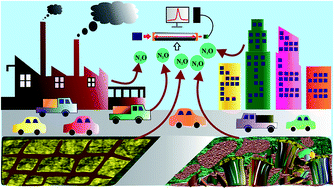An EC-QCL based N2O sensor at 5.2 μm using cavity ring-down spectroscopy for environmental applications
Abstract
Nitrous oxide (N2O) is an important anthropogenic greenhouse gas emitted into the atmosphere that can contribute to ozone destruction. Considering its environmental importance, the real-time monitoring and molecule-specific detection of atmospheric N2O with high sensitivity have received much attention in the 21st century. In this study, a widely tunable continuous wave (cw) external-cavity quantum cascade laser (EC-QCL)-based cavity ring-down spectroscopy (CRDS) in the mid-infrared region has been used to measure the mixing ratios of N2O in ambient air. The detection of atmospheric N2O was made using a rotationally resolved R(8e) absorption line of N2O centred at 1887.666 cm−1. Several atmospheric air samples were collected at various locations in Kolkata on seven consecutive days in different periods of the day. In situ measurements were carried out by the EC-QCL-based high-resolution cw-CRDS method. The laser-based CRDS sensor allowed us to perform direct, quantitative and selective measurements of atmospheric N2O mixing ratios at the levels of parts per billion by volume (ppbv). A significant change in N2O levels was observed in different sub-areas depending on the source of local pollution. We also observed a marked difference in N2O levels between morning and afternoon sessions of the day in a particular sub-area. The CRDS sensor for the detection of N2O allows a minimum detectable absorption coefficient of αmin = 4.8 × 10−9 cm−1 and an estimated detection limit of 4.5 ppbv at atmospheric pressure is also reported.



 Please wait while we load your content...
Please wait while we load your content...